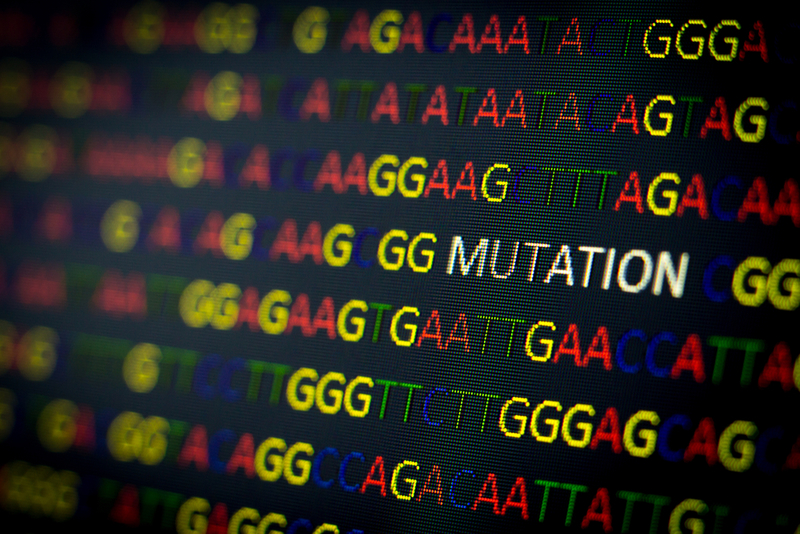Mutational signatures may identify patients with breast cancer most likely to benefit from platinum-based chemotherapy
American Association for Cancer Research News Dec 24, 2017
The presence in advanced breast cancer of mutational signatures characteristic of homologous recombination deficiency (HRD) was associated with improved clinical outcomes to treatment with platinum-based chemotherapy, according to results published in Clinical Cancer Research, a journal of the American Association for Cancer Research.

“Many patients with breast cancer, especially those with the difficult-to-treat triple-negative subtype, are treated with platinum-based chemotherapies like cisplatin, but not all have responses to this treatment,” said Steven J.M. Jones, PhD, head of bioinformatics and co-director of Canada’s Michael Smith Genome Sciences Centre at BC Cancer in Vancouver, British Columbia. “If we could better identify those who are likely to respond to platinum-based chemotherapy, we could optimize patient treatment.”
“We found that whole-genome sequencing of breast cancers can reveal mutational patterns characteristic of HRD that identify patients who are likely to respond well to platinum-based chemotherapies,” added Jones. “As whole-genome sequencing becomes more affordable, this presents an opportunity to improve breast cancer treatment.”
Homologous recombination is one of several cellular mechanisms by which normal cells repair damaged DNA. Deficiencies in this pathway occur in many cancers, including the 5 to 10% of breast cancers with hereditary BRCA1 and BRCA2 mutations. In cells that are deficient in homologous recombination, the DNA develops signature mutational patterns, said Jones.
Because it is known that platinum-based chemotherapy is particularly effective for patients with BRCA1 or BRCA2 mutations, Jones; Eric Y. Zhao, a graduate student in Jones’ laboratory; and colleagues set out to determine whether genomic mutational patterns characteristic of HRD, which are found in as many as 20 to 40% of breast cancers, may also be associated with good responses to platinum-based chemotherapy.
The researchers performed whole-genome sequencing on tumor tissue and matched normal tissue from 93 patients with breast cancer, 33 of whom had been treated with a platinum-based chemotherapy. After analyzing the data for the presence of six HRD-associated mutational signatures, they used a mathematical model called HRDetect, previously shown to predict BRCA1 and BRCA2 deficiency, to calculate an HRDetect score for each breast cancer. Nineteen breast cancers had high HRDetect scores (greater than 0.7), 37 had moderate scores (0.005–0.7), and 37 had low scores (less than 0.005).
“Importantly, all seven cancers with pathogenic BRCA1 or BRCA2 mutations had high HRDetect scores,” said Jones. “Thus, our study validated HRDetect using an independent cohort, which is important because whole-genome sequencing protocols can be variable across institutions.”
Further analysis showed that after adjusting for BRCA1/2 mutation status, high HRDetect scores were significantly associated with clinical improvement, as assessed by radiographic tumor shrinkage, following platinum-based chemotherapy. Among the 26 patients who had been treated with a platinum-based chemotherapy and for whom imaging data were available, clinical improvement was observed for eight of the 11 patients whose breast cancers had high HRDetect scores but only two of the 15 patients whose breast cancers had moderate or low HRDetect scores. Three of the eight patients with high HRDetect scores who had clinical improvement had known or likely pathogenic BRCA1 or BRCA2 mutations.
The median total duration on platinum-based chemotherapy and median overall survival was 3 months and 1.3 years longer, respectively, for those with high HRDetect scores compared with those with low HRDetect scores. However, the authors cautioned that these results should be interpreted carefully as they were calculated based on data from a small number of patients.
According to Jones, the main limitation of the study is that it was observational, meaning that the researchers examined a patient cohort for a clinically meaningful correlation, and that it, therefore, does not establish causation. He explained that establishing causation would require a randomized controlled trial but that the findings of their study will likely be helpful in the design of such a trial.
-
Exclusive Write-ups & Webinars by KOLs
-
Daily Quiz by specialty
-
Paid Market Research Surveys
-
Case discussions, News & Journals' summaries